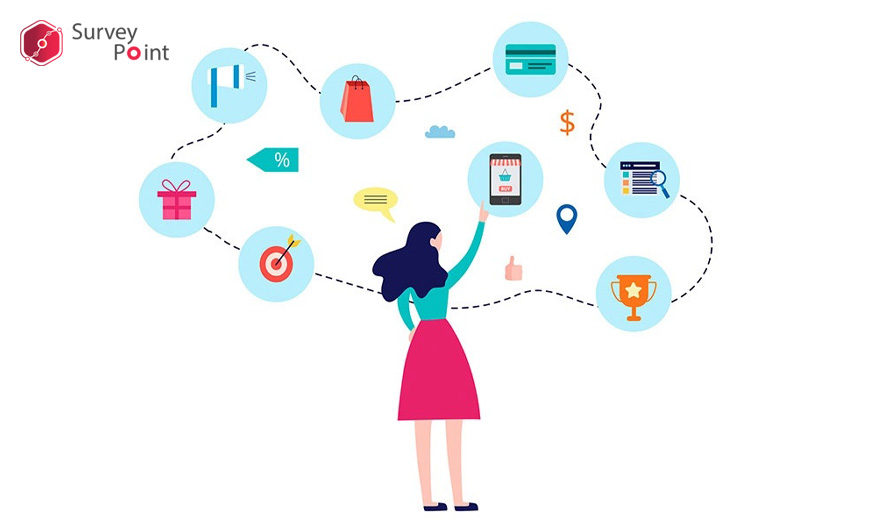
The concept of the Consumer Journey is widely used in the consumer experience and consumer experience management fields.
A company strives to make a product that its customers will love: You need to know their needs and what they experience when they use the product. One way to do this is to make sure everyone on the team has the same understanding of where the customer experience is lacking.
Here, you will find a detailed explanation of customer journey maps and when to use one.
Consumer Journey: The Idea
Consumer journeys are one way to elevate the consumer experience through insights at every stage. A consumer journey is a way to map out the steps a customer takes, their touch points with your product or service, and how they feel about it. There are many other types of customer journey maps.
The Process
The process of the consumer journey is sequential. In the first stage, it is crucial to start the journey by visualising it for one or two primary consumers or groups. Further, one can begin collating different demographics and traits that can be used for designing and visualising the journey. It is also important to conduct as much research as possible and ensure that everyone in the team is aware of it.
- Data from customer satisfaction surveys, support, analytics, competitive intelligence, and any other past customer research can also be used. Further, research like moderated interviews and focus groups can also be used to gain insight.
- Next, a team should be assembled that includes people from all business sectors, including development, design, marketing, and operations. It will be different for every business, but the most critical parts of the product or service must be considered. It should be ensured that people from those departments are present while drafting the consumer journey.
- The next step is to create a consumer journey, either from scratch or using an existing template, but most templates have similar components and are effective. A basic template can be used to begin the process and modified to fit the organisation’s needs.
A customer journey map template is a big grid with distinct stages of the customer’s experience with the product or service written across the top, having touch points from column to column. It can also be presented in a flow chart.
Consumer Journey Stages-Touch Points

Stage 1:
The first box is the awareness box when the customer is trying to discover possible innovative solutions.
Stage 2:
After the customer has investigated viable solutions, the next step is research. The product plays a pivotal role in this. Customers may buy some products right away. Conversely, they may spend hours researching the product because of their high switching costs.
Stage 3:
The next stage is the selection, which is followed by the purchase stage when the customer decides that they want to use the product.
Stage 4:
After that comes the delivery stage, which is about how and when the customer received the product.
Stage 5:
Lastly, there is the retention stage using follow-up: how does the company maintain a relationship with the customer once they have used the service? A marketing strategy that emphasises customer retention and product promotion using customers might be helpful here.
Following identifying the touch points, we can move on to what the customer does at each stage. We can write down the actions and behaviours of customers as we want to know what the customer is thinking about next. What are their thoughts, feelings, needs, or wants? Is there anything they need to be answered at each stage, or do they have questions?
Stage 6:
Next, we have interaction points where the customer, product, and company interact. Is there any communication or messaging? If so, how are you doing it? Are you using a mobile app or a website or doing it in person?
Additionally, we would try to assess pain points. Where are the customer’s pain points at each stage of the process? The goal of listing these pain points is to deal with them and find solutions. One needs to provide a summary of customers’ problems, questions, and a list of potential opportunities you can offer them.
On A Final Note
Before we wrap up, remember that the customer journey map is a living document that should change as a product or service improves. Revision of the document is necessary, as is sharing the revised map and the results with the team members.
Now, the question is, how do you do that? Is there a tool that is easy to navigate while providing the best survey solutions? The answer lies with SurveyPoint. This platform enables you to create and launch surveys immediately, with ease and flexibility. The robust analytics platform lets you do more than graphs and charts- deep dive into your data and visualise it any way you want to.
Want to try it for free? Sign up here!
Kultar Singh – Chief Executive Officer, Sambodhi




